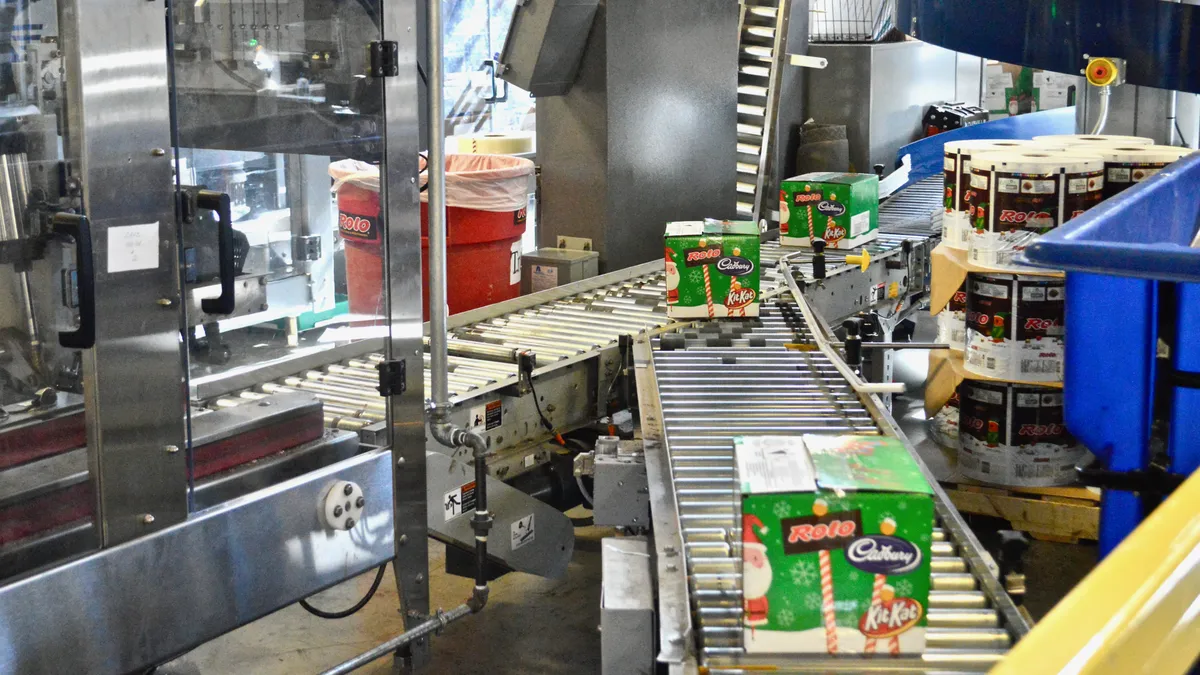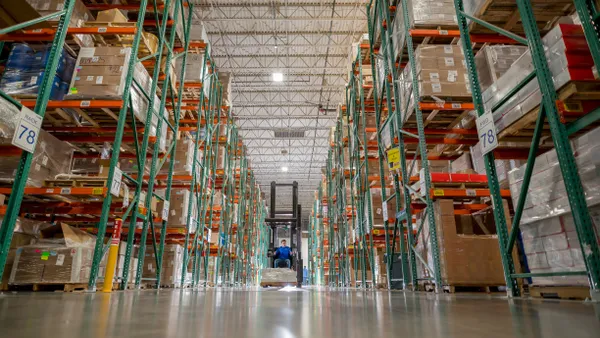Dive Brief:
- Warehouse management systems (WMS), manufacturing execution systems and ERP software are among the most common platforms for collecting data in a manufacturing setting, according to a survey by BDO of 100 C-suite executives at mid-market manufacturers.
- The use of software systems such as WMS or ERP allow a manufacturer to create a "digital thread" across the organization. The thread creates visibility throughout the supply chain and allows an organization to respond to disruption more quickly, according to the report.
- Thirty-nine percent of respondents said cybersecurity was the biggest challenge when it comes to increased digitization within a manufacturing organization, the survey found.

Dive Insight:
The digital thread is how BDO describes a modern manufacturing environment with good data management and business intelligence in place to help leaders better understand their assets. But the concept was coined by GE, which spoke about a "digital thread" as it related to its Predix platform, a cloud-based tool for data mining in industrial settings, BDO Digital Transformation Services Managing Director Ankur Laroia told Supply Chain Dive in an interview.
"It's essentially a framework," Laroia said. "It's an architecture that connects processes and data, and it produces a composite view of a particular asset's data across its product lifecycle."
Creating this thread is an important step in adding automation to a manufacturing operation. Companies are increasingly looking to these technologies as factories figure out how to keep workers productive while maintaining social distancing. Introducing robots is quicker and cheaper than completely redesigning a factory, Laroia said.
The data gained from these technologies will also help manufactures better understand their suppliers — if their suppliers have the technical ability and willingness to share their data, he said.
The BDO survey found that 59% of manufacturers have consolidated data in a central location, but only 21% are sharing data with suppliers. "A lot of times what we see is the plumbing doesn't exist," Laroia said. "It's not that they're not willing to do it." Suppliers don't always have a way to send or receive data, so there is some need for infrastructure to be put in place, he said.
However, once this connection is established, "the digital thread can give you early insight into delayed bottlenecks," Laroia said. Manufacturers can set up benchmarks for suppliers to see when issues arise, and real-time data from sensors within factories can point out bottlenecks as they materialize, he explained.
"We can use it to optimize suppliers, manage the design phase, handle production and installation, and then monitor operations," Stephan Biller, the chief manufacturing scientist at GE Global Research who helped develop the company's digital thread, said in a 2016 blog post for the company.
When a potential problem arises further upstream in the supply chain, either with a supplier or logistics partner, this can be caught early and allow the company to shuffle operations to accommodate. These notifications will typically come from a manufacturing decision support system (MDSS), which can be bought off the shelf, but many companies create their own, joining disparate systems in a single data lake, Laroia said.
With all the data centralized, a company can see if an order is coming in, as well as if a part for that order is going to be delayed. "What's that gonna do? Can I source it from somewhere else?" Laroia said. "So, a lot of that decision support is going to come from a data lake that's underneath a lot of these systems that are servicing these capabilities."
A "digital thread" can be created in a number of ways. A company might not need a WMS, a manufacturing execution systems and an ERP. It could just need a system collecting the data to feed the MDSS. "Data is the lifeblood," Laroia said.
And putting a digital thread in place is not necessarily a heavy lift, as the "pipes and valves and sockets" for these tools are largely standardized across platforms, so this is something a good IT team can likely tackle, Laroia said.
This story was first published in our weekly newsletter, Supply Chain Dive: Operations. Sign up here.














